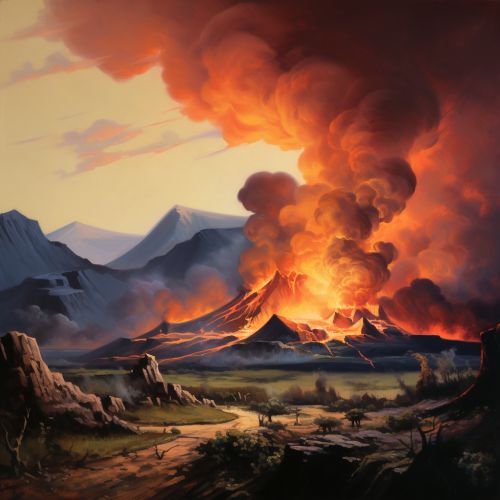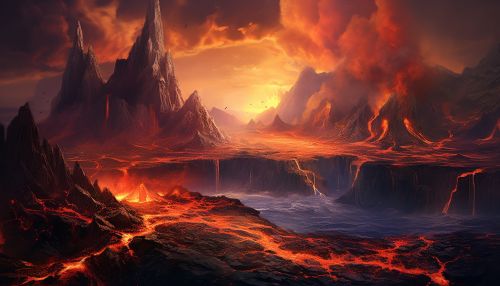Effusive Eruption
Introduction
An effusive eruption is a type of volcanic eruption where lava steadily flows out of a volcano onto the ground. This type of eruption is characterized by the outpouring of low-viscosity magma, typically basaltic in composition, which is capable of flowing great distances from the vent. Unlike explosive eruptions, which are marked by violent explosions and the ejection of pyroclastic material, effusive eruptions are relatively calm and steady events.


Characteristics of Effusive Eruptions
Effusive eruptions are driven by the low viscosity of the erupting magma. This low viscosity is typically due to the magma's high temperature and low silica content. The magma in these eruptions tends to be mafic, meaning it is rich in iron and magnesium but poor in silica. This composition results in a low viscosity magma that can flow easily and quickly, leading to the steady outpouring of lava that characterizes effusive eruptions.
Mechanism of Effusive Eruptions
The mechanism of an effusive eruption begins with the rise of magma through the magma chamber and the volcanic conduit. As the magma rises, it experiences a decrease in pressure which leads to the formation of gas bubbles. In effusive eruptions, these gas bubbles are able to escape easily due to the low viscosity of the magma. This release of gas reduces the pressure within the magma, preventing it from exploding and instead allowing it to flow out of the volcano.
Types of Lava Flows
Effusive eruptions can produce several types of lava flows, including pahoehoe, aa, and pillow lava. Pahoehoe is a type of lava flow that is characterized by a smooth, unbroken surface. Aa lava, on the other hand, is rough and blocky. Pillow lava is a type of lava flow that occurs when lava erupts underwater, forming a series of rounded shapes that resemble pillows.
Examples of Effusive Eruptions
One of the most famous examples of an effusive eruption is the eruption of Kilauea in Hawaii, which has been erupting continuously since 1983. Another example is the eruption of Mount Etna in Italy, which is one of the most active volcanoes in the world and is known for its frequent effusive eruptions.
Impact of Effusive Eruptions
While effusive eruptions are less violent than explosive eruptions, they can still have significant impacts. The lava flows produced by these eruptions can cover large areas and cause extensive damage to infrastructure. Additionally, the gases released during these eruptions can contribute to air pollution and climate change.
